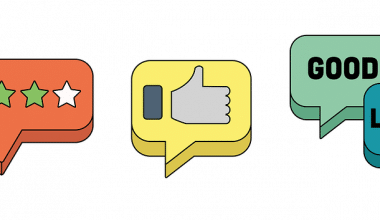Maintaining a healthy relationship with the customer is crucial to the sales cycle. This relationship you develop with your customers outside the context of your product or service can be referred to as “customer connection.” In general, the main goal of every business is to build strong relationships with their customers since they are both the start and end of the sales cycle. The sales cycle begins and ends with them. People aren’t only looking for the problem-solving capabilities your product boasts; they also want to know they can count on you and your staff whenever they need assistance. So, you must build an instant and good connection with your customers to earn their trust and keep your relationship strong. But how do you go about that?
We understand you might not know how to connect with your customer and why it is important to maintain a strong and healthy relationship with them. But now that you are here, you are about to get an antidote that negates the effects of these toxins on your business. Read on…
What is Customer Connection?
Customer connection is a tool that, during the purchasing process, helps forge a solid tie or relationship with the customers. One of the basic secrets to a successful business is cultivating positive customer relationships. Customers are more inclined to make repeat purchases and increase their lifetime value if they feel more at ease and connected to the brand.
However, customer connection goes beyond the simple conversation. The basis of connecting is a systematic approach to building relationships that go beyond the original transaction. While communication is an integral part of it, there is much more to it. But why do businesses need to create a customer connection?
Why Is Customer Connection So Important?
Connecting with customers requires more than just talking to them. Your connection is a deliberate corporate strategy to strengthen bonds with the customer. Customers that feel connected to your brand are more inclined to make additional purchases and advocate on your behalf. Hence, building relationships with customers is essential to retaining existing clients and attracting new ones, which in turn helps businesses expand more quickly.
In addition, by giving them a positive customer experience, making a human connection with your customers fosters loyalty. And that benefits more than just your clients. It benefits businesses.
According to the Sprout Social survey, “Investing in customer relationships directly increases business income and strengthens customer loyalty. More than half of consumers (57%) increase their spending with a brand when they feel a connection to it, and 76% choose that brand over a rival.
Making connection a primary concern is worthwhile because it’s crucial for your company and its customers.
However, a customer relationship is only successful if it’s mutually beneficial on both ends. The information must be sent and received between the client and the business. A positive relationship will result in profitable sales, customer loyalty, and referrals for the business. Additionally, you must provide the customer with quality, support, and value.
How to Make an Instant Connection with Customers
As a business owner, you’re no doubt aware of the value of a good recommendation. However, are you receiving as many as you’d like? How are you planning on providing a memorable encounter for a customer?
The key is to establish genuine relationships with your customers. Customers are more likely to stick with a company if they have a positive emotional experience. And also if they have a positive experience with the product or service.
Investing in a customer connection pays off in the form of a deeper understanding of their needs and preferences and a better grasp on how to meet those needs. Moreover, when your labor brings joy to others, it no longer feels like work.
Below are five easy, doable tips for making an authentic, instant connection with your customer.
Asking How Their Day is Going
Begin modestly. While asking “How are you?” is always a good idea. However, more interesting and less likely to elicit stock answers (“Fine, and you?”) is “How is your day going?” and “How are you enjoying this sunshine?” Use superlatives like “fantastic” and “wonderful,” as well as tidbits about yourself, to strike up a conversation with a customer who answers with generic praise.
Remember to Follow up After Every Phone Conversation
After hanging up on the phone, it’s nice to send a thank-you email as a follow-up. Making a personal connection with a customer is sometimes useful. You could email them a brief synopsis of your conversation or a simple “It was lovely speaking with you!” Every interaction with a customer is a chance to leave your mark.
Listen
The ability to listen attentively is becoming rare in corporate settings. Hence, give your consumers your undivided attention to show them how much you value them. Pay attention to how they sound and mirror that when you can. If someone calls and fumbles while giving you their number and becomes embarrassed, you might lighten the mood by saying something like, “That’s ok!” Yes, I’m human, and I do stumble at times. Building rapport with your customers will make it much simpler to foresee (and satisfy) their requirements.
Try Using a Compliment!
The power of the spoken word to lift the spirit is undeniable. A sincere compliment can brighten your day and thus put a grin on your face instantly. Use a compliment when they talk about what might seem personal and important to them. Mere complimenting a name by saying “what a lovely name” or remarking on their order instantly shows you’re paying attention and that you care, a surefire way to make personal connections.
How about Sending a Greeting Cards
Whether for a special occasion like a birthday or wedding or “just because,” a handwritten notecard is a touching surprise that recalls a more human, less mechanized era; add that extra wow factor by showing your consumers you’ve thought about them with a handwritten message.
What Are the 5 Types of Connection?
The times reflect decisions on what kinds of customer service to provide range widely. The quality of customer service varies widely and is by no means uniform. People used to have to come in person to the customer service department to have their issues resolved. Many consumers associate “customer service” with long hold times, during which they twirl their hair impatiently while waiting for an agent to handle a straightforward refund.
However, numerous other channels were available to customers besides in-store service departments and toll-free numbers. In today’s market, customer service is an essential component, but the specific support that should be provided will vary from company to company and from customer to client.
Below are the five types of customer connection;
#1. Traditional, Brick-and-Mortar Support
Traditional stores will always be around because consumers value the ability to physically examine goods before making a purchase. However, businesses must be adaptable and flexible in a dynamic and unpredictable environment. Most of today’s consumers (65%) do business with online merchants who provide secure, hassle-free online purchasing options.
A customer’s experience across many touchpoints, including desktop, mobile, and in-store, should all be seamlessly integrated. Stores generally try to close this gap through “Click and Reserve” and “Click and Collect” services.
#2. Messaging and Chat Support
More and more, consumers want to be able to contact their favorite companies using the same platforms they use to talk to their friends and family, such as Facebook Messenger, text messaging, and instant messaging apps. In 2020, nearly one-third of customers said they would message a firm for the first time, and 74% of those people want to continue doing so in the future.
#3. Email Support
An email has become the standard method of client service and is widely used by businesses everywhere. One of the simplest ways to centrally monitor, prioritize, and allocate customer service conversations is through email, provided that the appropriate email management software is in place.
In addition, one essential benefit of email is the ability for customers to reach out whenever they like to submit a question. Plus, it’s difficult to find someone who doesn’t have an email. Also, email is frequently the initial channel via which a company provides customer service.
#4. Phone
Even in the age of Twitter DMS, a phone call may be a useful tool for problem-solving. Phone support allows employees to quickly handle complicated issues and provide in-depth, individualized assistance to each consumer.
#5. Self-Service
Help desk staffs are experts in the problems that customers face and the best ways to fix them. However, agents also invest significant time in research. Your company’s customer service department will be better equipped to support clients if they have access to the information they need through a shared knowledge base that draws on the entire company’s expertise. It can assist your firm in identifying and filling any knowledge gaps it has.
Customers also favor self-service because it requires less effort on their part.
What Are the Three Components of Customer Connections?
The following three factors make up the client experience:
#1. Discovery
This component focuses on how businesses communicate with their clients and how they make that communication meaningful and pertinent. However, the key to successful discovery is timing. That is the ability to know where and when to market.
#2. Engagement
This component is about how customers engage with the business and its offerings. Finding methods suitable for customers to interact with things in novel ways that produce novel benefits is the key to having strong engagement.
#3. Delivery
This component virtually blends swiftness with dependability. Customers want things to be delivered promptly and in acceptable shape.
How Do You Build Customer Connections?
Today’s businesses require a lot of customer-related data to enable them to deliver targeted messages and experiences. To enhance connections and create an emotional bond with the clients, businesses must collect customer-related data. Here are a few strategies for connecting with clients that work well.
#1. Every Customer is Remarkable
Every consumer is distinct and has different wants for the goods and services the business offers. The same marketing message cannot be modified for different target audiences. So, businesses must treat every customer as a unique individual and should accommodate their needs. Businesses can focus their marketing efforts on those consumer segments using customer segmentation tools. To do this, you must divide customers into groups by age, gender, social class, education level, and income level for businesses. Sending targeted messaging to the customer segments will lead to an increment in upselling and cross-selling chances.
#2. Addressing and resolving Customers’ Complains
To prevent consumer unhappiness, the business must reply to complaints as soon as feasible. Poor customer service can quickly put an end to a firm. As such, customer care representatives must respond to and resolve customer issues via chatbots, email, phone, and social media. Businesses need to be mindful of how customer experience might be impacted by response times. The management must track and assess customer service metrics to identify bottlenecks and address them if the business receives poor customer evaluations due to poor customer service.
#3. Boost Customer Involvement
Personalization is enhanced more by a CRM system using an integrated marketing platform. You may increase client engagement by generally sending text messages and emails to them using automated CRM solutions. Based on consumer categories, businesses can also create customized, targeted adverts. Marketers can utilize this automation to lessen repetitious effort. Businesses can also schedule marketing efforts at regular intervals thanks to automation.
#4. Use the Buyer Personas and Empathy Maps
Empathy maps assist companies in forging warm and enduring relationships with their clients. The company must, however, discover the customer’s feelings or thoughts on the product, what motivates them to purchase, what they value most, and how they wish to connect. Such businesses can also use this information to develop and improve customer connections. Making decisions involving customers is facilitated by these empathy maps.
#5. Regulate Your Customer Expectations
Businesses must comprehend the thoughts that clients are thinking about to serve them better. To comprehend the customer’s purchasing behavior, a smart firm must study the demands and requirements of the customer. In this regard, you can use predictive analytics to estimate future behavior and predict data patterns.
#6. Engage in Direct Communication
Today’s customers expect high-tech customer service. Most businesses communicate with their clients via email, text messaging, social media, and other channels. Companies should be aware that communication errors might occasionally result from technology. Face-to-face encounters with clients hence reduce the possibility of misunderstandings. A pleasant method of interacting with customers about your brand is face-to-face.
#7. Show Gratitude
To satisfy consumers, businesses must express gratitude to them and let them know how much they value. If a customer is satisfied with a brand, they will promote good word of mouth about the business, enhancing its reputation and image. Businesses must develop plans to reward devoted clients.
What are the Three Types of Connections?
The 3 basic types of connections are Text to Self, Text to Text, and Text to World.
Text to self relates to how you relate to the text on a personal level. What aspects of what you are reading’s depicted lives can you relate to in your opinion or, perhaps, those of people you know?
Conversely, text-to-text refers to comparing what you are talking about to something you have already read. If you are reading a book about space, for instance, you might recall other readings you have done on the subject, such as another piece of literature, an internet article, or a blog.
Text to the world, meanwhile, relates to finding links between your present reading and the outside world. Are there any events in your reading resembling those in the outside world?
What are the 4 Pillars of Customer Service?
These pillars serve as a framework for firms to concentrate on and assess when planning projects because they collectively make up the elements of good customer service.
According to Gartner, the world’s leading research and advisory company, it breaks customer service down into;
- Getting Connected
- Knowledge & Insight
- Process Orchestration
- Resource Management.
What are the 3 Cs of Customer Service?
The basic three Cs of customer service or satisfaction are:
- Communicate: Use customer service to communicate with customers
- Connect: Use customer service to connect with customers
- Celebrate: Use customer service to connect with customers
What is Successful Customer Interaction?
Good customer connection at every stage in the sales life cycle is essential for everything from quality, value, price, business culture, and social responsibility to customers, support, and governance procedures, among other things.
Effectively and successfully interacting with customers requires setting reasonable expectations, providing accurate information, and being honest with them. With all this in play, you establish excellent interaction with your customers.
What 4 things Make Good Customer Communication?
The first stage in operating a profitable business is to attract customers. Customer satisfaction must be your top priority if you want your business to last and grow. However, customer support employees must communicate clearly and concisely to resolve issues as quickly as possible. And to make good customer communication, you must;
- Listen before you speak
- Be clear and concise
- Repeat, resolve, and also review
- Have the right tools, as good service needs just the right tools.
What is the Best Way to Make Connections?
Here are some of the best and most effective ways to make connections;
- Be outgoing
- Create a variety of communication channels or methods
- Get involved in your industry
- Provide values
- Find commonalities
- Show your gratitude
- Publicize your business
- Create an online presence
- Communicate with your most crucial contacts.
- Do the hosting!
Conclusion
Although connecting with customers can be challenging, it all begins with prioritizing their needs and wants. When you have a customer-centric perspective, your customers become your major priorities.
And deliberate customer engagement and connection come with a high level of brand loyalty and development, devoted customers, and long-lasting relationships.
Customer Connection FAQs
What are the benefits of creating customer connections?
The following are some of the main justifications for working to forge more and stronger relationships:
- New career prospects
- Higher development
- Increased customers
- Faster promotion
- Mentorship relationship
What makes a good connection?
Sharing your thoughts and feelings with someone and having that person respond with genuine interest and empathy for you. Exhibiting interest in and identifying with the feelings of another person and or gratuitous acts of kindness rendered to another person.






